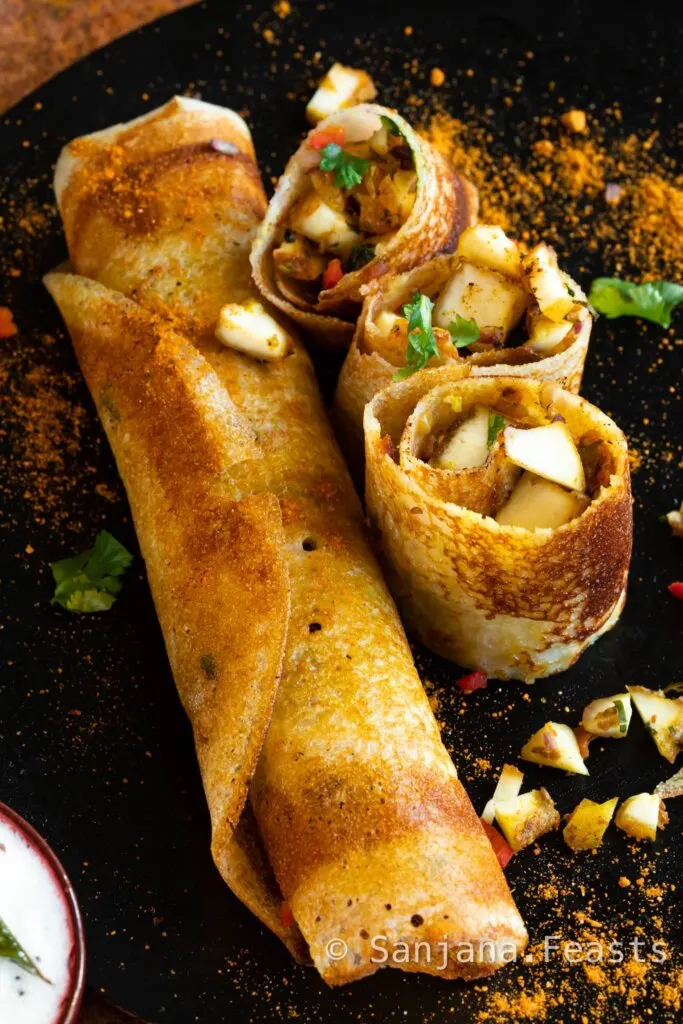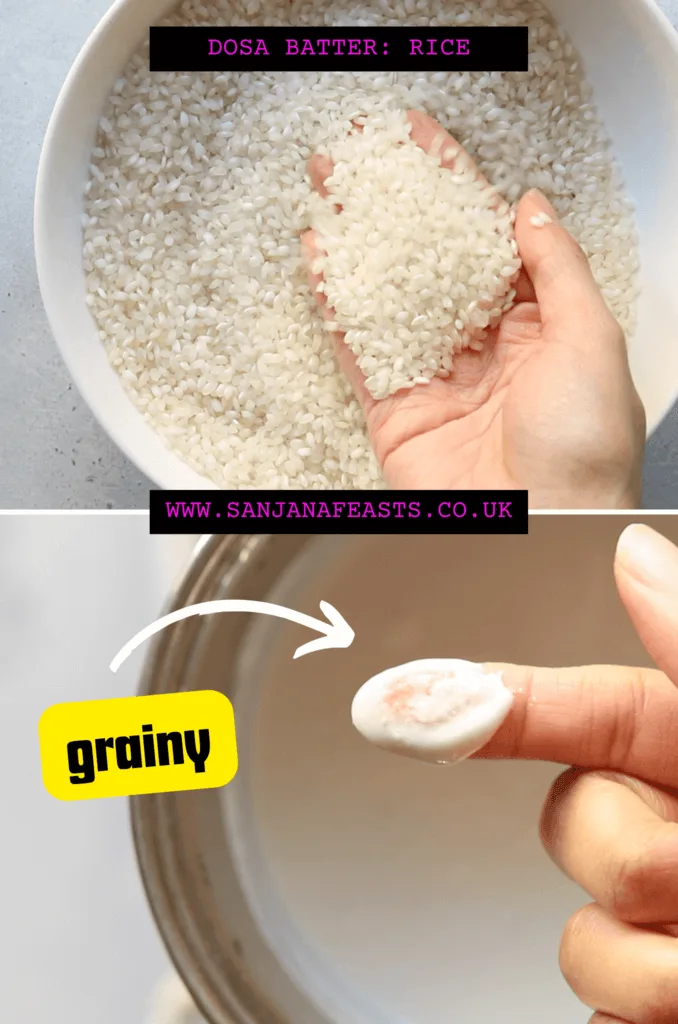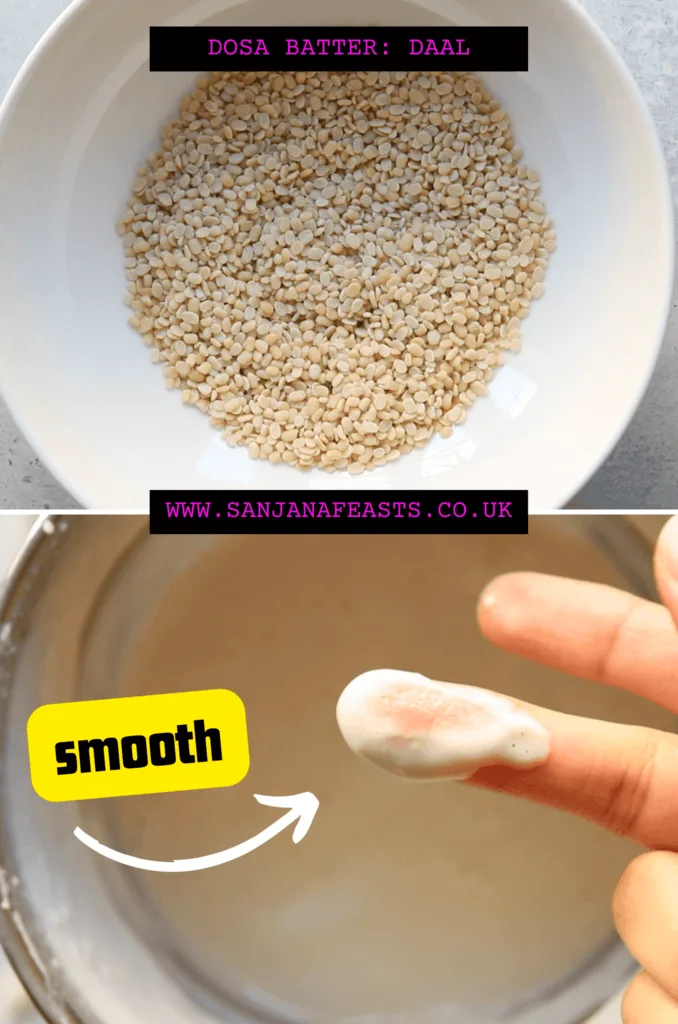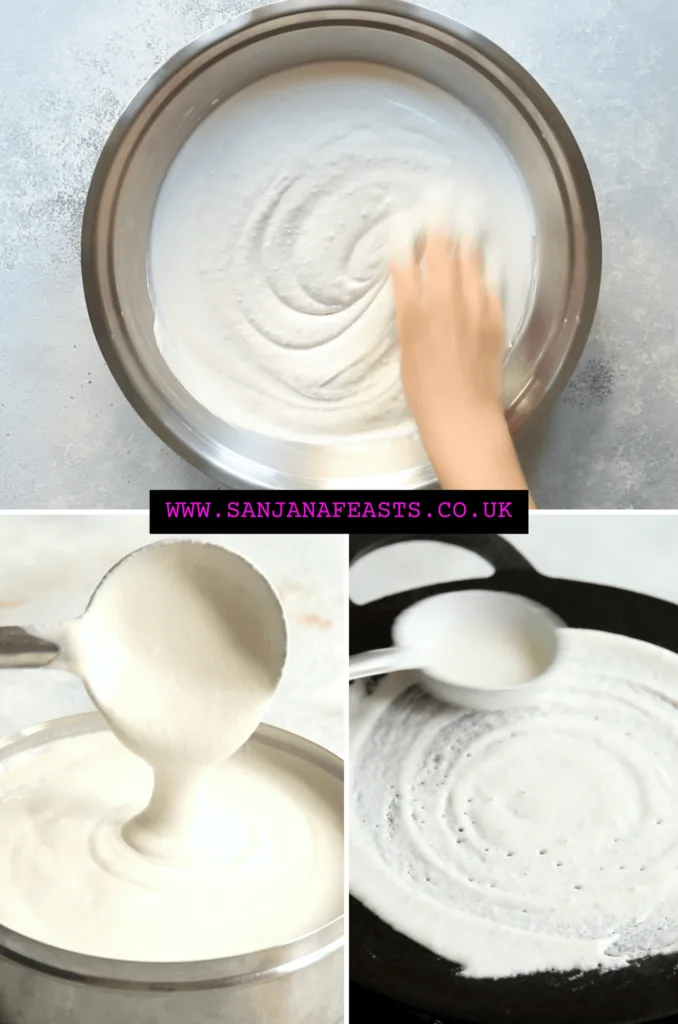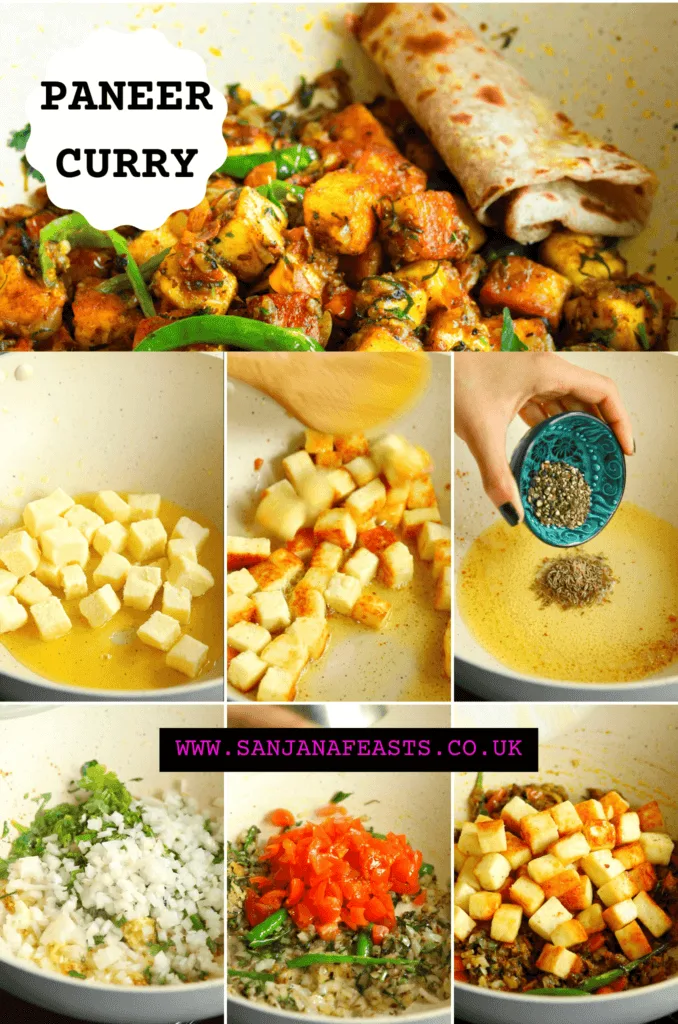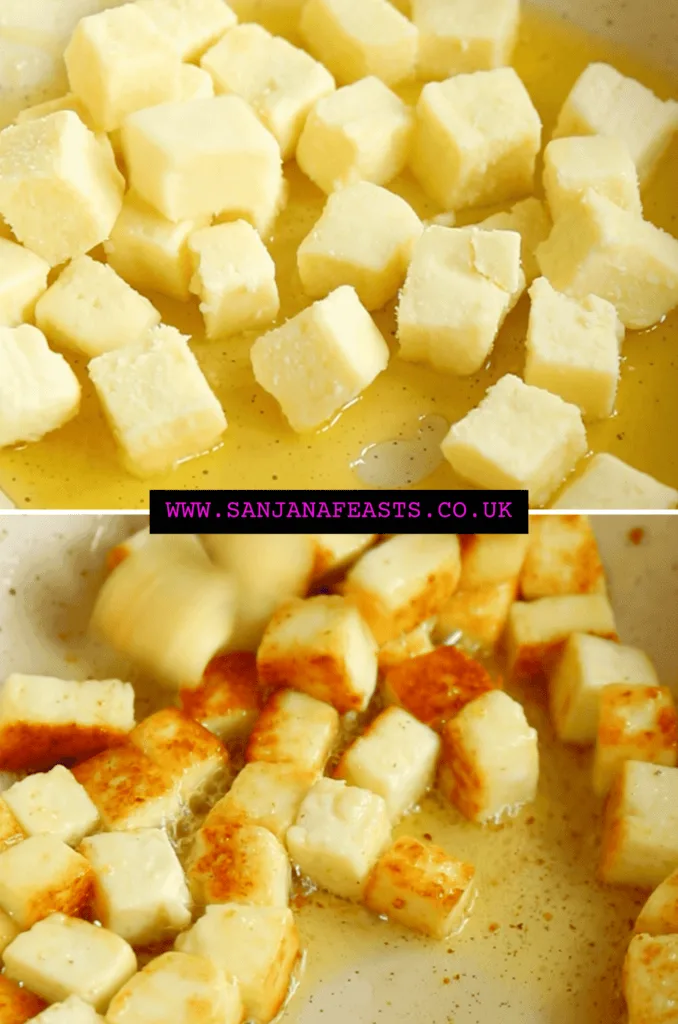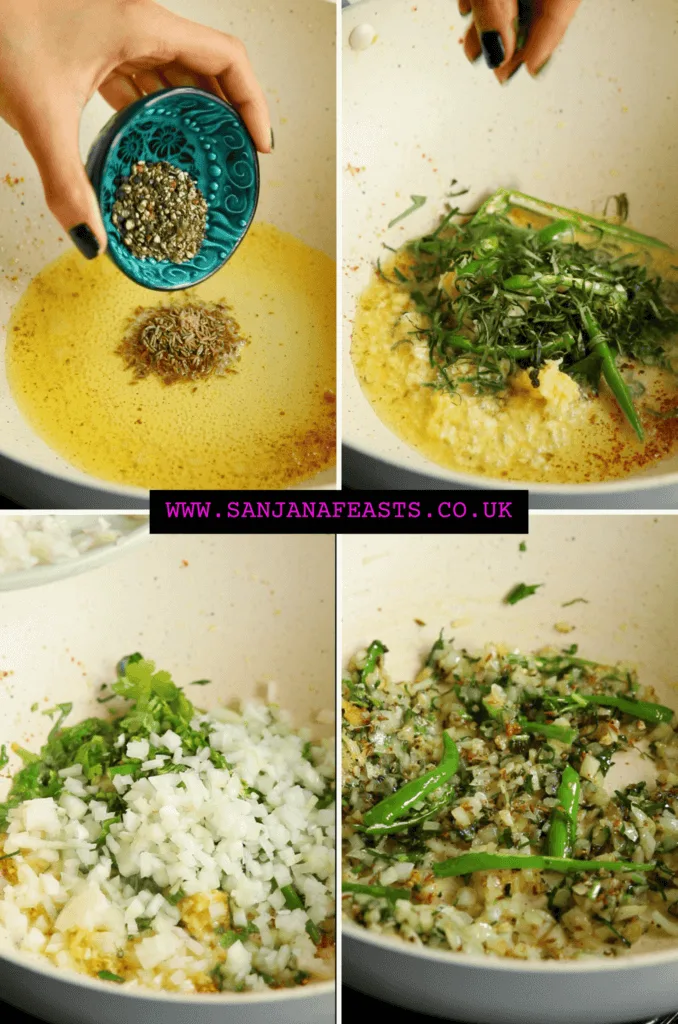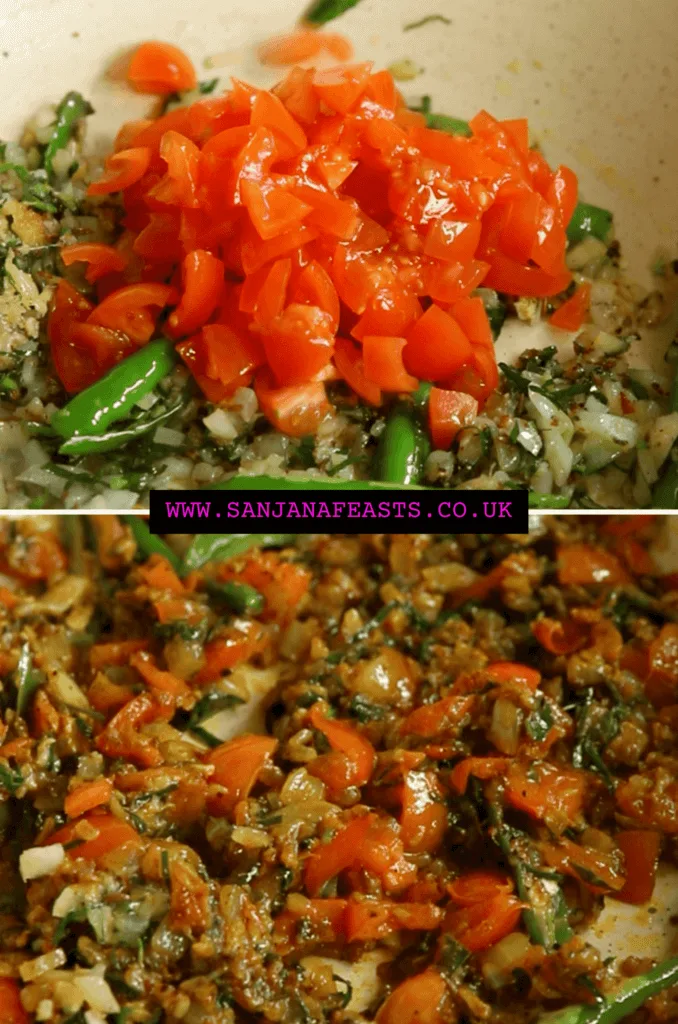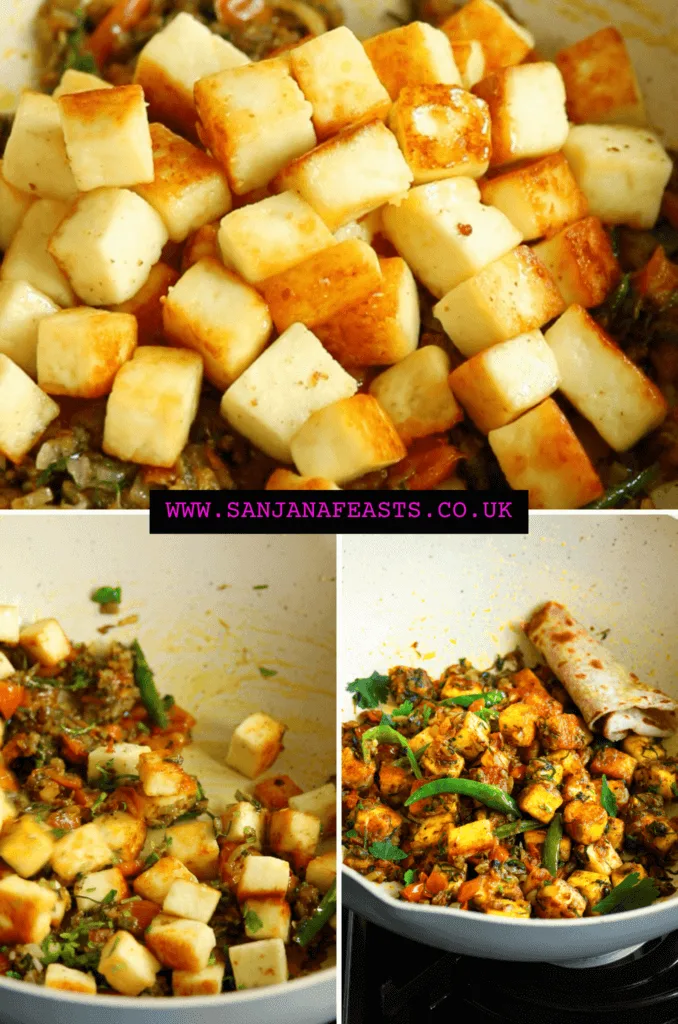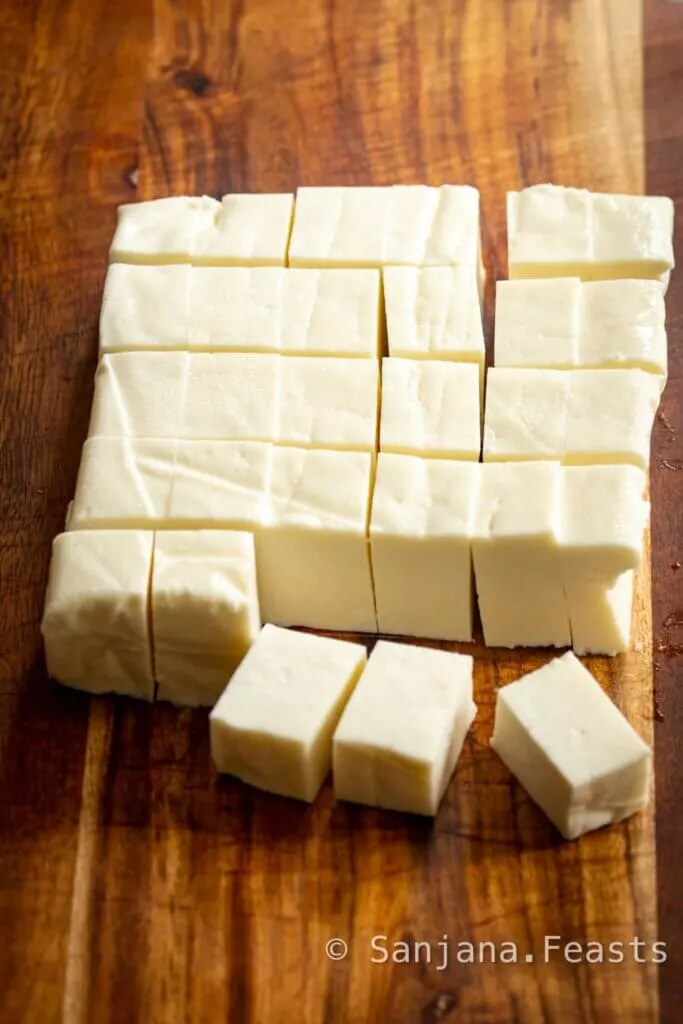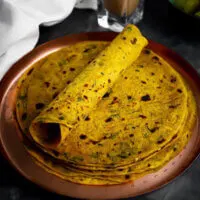In this post, you can watch how to make Paneer Masala Dosa with a step-by-step recipe and video. From fermenting the dosa batter, to learning how to spread thin dosa, as well as dosa cooking techniques, this is the ultimate guide to making Paneer Masala Dosa at home.
What is paneer dosa made of?
Paneer dosa is a type of dosa, a savoury Indian pancake, that is stuffed with paneer, a type of Indian cheese. The dosa batter is made of fermented rice and urad daal (lentils). The paneer filling typically includes paneer, onions, tomatoes, and spices like cumin and coriander. The dosa is cooked on a griddle (tawa) until crisp, and the paneer filling is added on top before folding the dosa in half. It is often served with chutney and sambar, a lentil-based vegetable stew.
Tips for Making Amazing Paneer Masala Dosa
Making a perfect Paneer Masala Dosa is all about getting the right ingredients and the perfect cooking technique. Here are some tips and tricks.
1. Invest in a good quality tawa or non-stick pan
A good quality pan will help you cook the dosa evenly and prevent the batter from sticking to the pan. Opt for the flattest well-seasoned cast iron or anodised aluminium tawa. In a pinch, you can also use a non-stick frying pan but the dosa may not be as crispy as cast iron-cooked dosa.
2. Choose the right rice
Idli rice (parboiled rice) has the ideal amount of starch for making dosa at home. Add a small amount of Basmati to heighten the aroma. If you can’t find idli rice, another short grain rice like sona masoori or even Thai Jasmine rice works well. You will also need white urad daal (skinless black gram).
3. Soak the rice and daal
Soak the rice and white urad daal for at least 6 hours, or up to 8 hours. This will ensure the rice and lentils are well hydrated so they grind and ferment properly.
4. Grind the rice and daal separately before mixing
The rice batter should be mostly smooth, but still a little grainy, like that of a gentle exfoliator. This will produce crispy dosa. Indeed, it might seem tedious but this is the trick to getting the perfect, spreadable consistency for dosa. The daal, methi and poha batter should be totally smooth. Its’ viscosity is what gives the batter a uniform body. Mix the two batters together at the end using your fingers. The dual texture batters create the perfect dosa!
5. Ferment the batter well
The key to making a perfect dosa is to ferment the batter well. 8-10 hours will usually suffice, but if it’s cold, it can take longer. Fermentation helps to create the right texture and sour flavour of the dosa. Look for billowing air bubbles. However, do not add salt until the very end, after the batter has fermented. Salt will slow down the fermentation process. Keep the dosa batter in a large, deep bowl, in a very warm place to encourage quick fermentation. Oh, and before stowing away, whip the batter with your fingers for 3-4 minutes. The heat from your hands warms it for speedy fermentation, too.
6. Use the right batter consistency
The consistency of the batter plays an important role in making the perfect Masala dosa. The batter should be thin enough to spread evenly on the pan but thick enough to hold the filling. Add no, or very little water when grinding the soaked rice and lentils. You can always add more water at the end but you can’t take it away!
7. Spread and cook the dosa over a medium heat
Cooking the dosa on medium flame ensures that it cooks evenly and gets a crispy texture all over the bottom. Temper the hot pan with a splash of water, then spread a very small amount of oil over the surface of the pan using half an onion or kitchen towel. Too much oil on a lukewarm pan will result in the batter sliding around all over the place. Not good. Use a medium hot pan (you can turn it down later) and very little oil until the batter is spread (then you can add more oil).
8. Spread the paneer filling evenly
The paneer filling is a crucial element in the Paneer Masala Dosa. Finally, spread it evenly on the dosa to ensure that you get a bite of the filling with every bite of dosa.
Ingredients for Paneer Masala Dosa
For the dosa batter
Idli rice – parboiled short-grain idli rice is available in South Asian supermarkets Basmati rice – any long-grain Basmati will do. It adds excellent flavour. Poha – flattened rice flakes. These will make the dosa lovely and crispy. They do not need to be soaked prior to grinding Methi (fenugreek seeds) – these will add lots of flavour and encourage quick fermentation of the dosa batter Water – use water sparingly when grinding the dosa batter
For the paneer masala
Paneer – feel free to use shop bought paneer as I have done here. Homemade paneer produces an amazingly soft and creamy texture, should you have time to make it. Ghee or oil – I use ghee for added richness, but feel free to use any cooking oil Cumin seeds – whole brown cumin seeds for a deep earthiness Black pepper – Crack whole black peppercorns coarsely just before using for the most potent heat Asafoetida – ‘hing’ or asafoetida is a spice derived from the gum of a tree. It has a strong onion/garlic flavour. Optional. Chillies – I like using Indian green finger chillies but you can use any chillies you like, or even chilli powder. Onion – chop the onion finely so that it browns quickly Tomato – again, chop your tomato finely so it softens into the onion masala fast. Use 2-3 teaspoons of tomato purée and some water if you don’t have fresh tomatoes Ginger – mince fresh ginger finely or slice into juliennes Garlic – crush or mince Curry leaves – finely chiffonade into thin strips Fresh coriander leaves – we add these into the spice tempering along with curry leaves, and at the end Turmeric – for a beautiful colour Garam masala – a warming Indian spice blend. Use shop bought, or try my Homemade Garam Masala recipe
Steps for making Paneer Masala for Dosa
1. Lightly-fry the paneer
This is an optional step. I like the golden colour of the paneer in this curry and the first texture of paneer in a dry curry. You can use any of the above cooking methods for the paneer, or choose to avoid pre-cooking it. The choice is yours.
2. Cook the whole spices and aromatics
As is the case with any curry, it’s important to temper the spices in hot fat before you begin adding other ingredients. Indeed, most spices are fat soluble, which means their favours are best extracted through oil or ghee.
3. Brown the onions
Before adding the paneer, it’s a good ideas to spend a few minutes browning the onions and cooking the aromatics down. Do this over a low heat. The sweetness of browned onions (bhuna) will balance the heat of the chilli and the sourness of the tomato.
4. Add tomatoes and dry spices… Now wait for the oil to separate
Cook the tomatoes until they soften. Mash with the back of a spoon to create a rough paste. The mixture doesn’t need to be smooth. Add dry spices at this stage and keep the heat low as dry spices burn quickly. Add a splash of water if you notice the spices are burning. Finally, when you notice the ghee or oil starting to separate from the tomato mixture, it’s ready for the paneer.
5. Toss the paneer into the curry
Toss the paneer in the gravy and heat through. Since the masala was perfectly cooked, it will cling to each piece nicely.
How to make paneer gravy for dosa
To adapt this recipe to a version with gravy, simply stir 125ml cooking cream through the curry at the end of the cooking process. Bring to a very gentle simmer and your paneer curry with gravy is ready. If you don’t want to use cream, add an extra tomato and some water. Serve the curry alongside the dosa, rather than inside it.
Are Paneer Masala Dosa vegan?
No, this recipe is not vegan friendly, due to the dairy in the paneer. Give it a go with tofu, soya chunks, tempeh or seitan.
Are Paneer Masala Dosa gluten free?
This recipe for paneer masala dosa is free from gluten. However, check the label on asafoetida, since some commercial brands contain wheat flour.
What is paneer tikka dosa?
Paneer tikka dosa is a variation of the traditional dosa that features paneer tikka as its filling. Paneer Tikka is a popular Indian appetiser made by marinating cubes of paneer in a spicy yoghurt-based marinade and then grilling or baking until golden and slightly charred. To make paneer tikka dosa, the dosa batter is spread out on a hot griddle and cooked until crispy. Finally, once the bottom of the dosa is cooked, a generous amount of paneer tikka filling is added to one half of the dosa. The filling can include the cooked paneer cubes, onions, peppers, and other vegetables. The dosa is then folded over to create a semi-circle shape and cooked until the filling is warmed through.
Styles of Dosa
Paneer Masala Dosa recipe | How to make Paneer Masala Dosa
More Indian Breakfast recipes you might like
With love and Paneer Masala Dosa,
Use this dosa recipe to make Classic Masala Dosa with Potato Filling, plain dosa (Sada Dosa), ghee dosa, butter dosa or even Uttapam.Serve the Paneer Masala on its own with roti, naan or paratha for a quick and delicious weeknight curry option.Spread the batter very thinly for an excellent Paper Dosa.The dosa batter can be made in advance and kept in the fridge for up to 3 weeks. You can prepare the paneer filling 24-48 hours ahead, if necessary.Experiment and try adding your favourite toppings to make customised dosa.Masala Dosa are best eaten straight away. If you must reheat them, try popping them back onto the tawa or in a frying pan with a little butter or ghee to crisp them up again. Be sure to heat through thoroughly.
Sanjana Share this recipe



